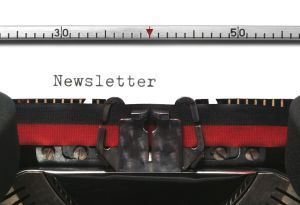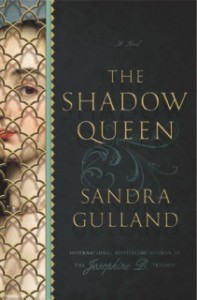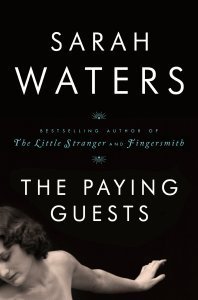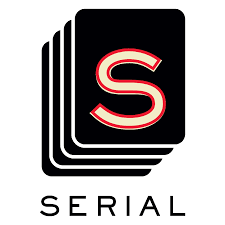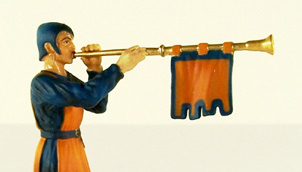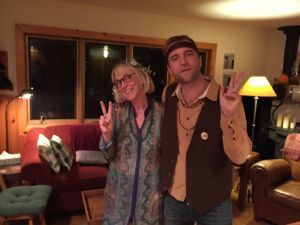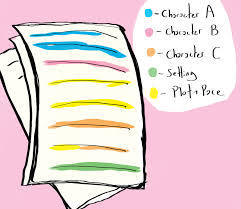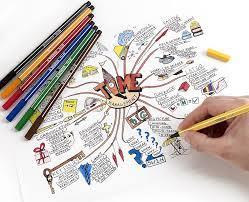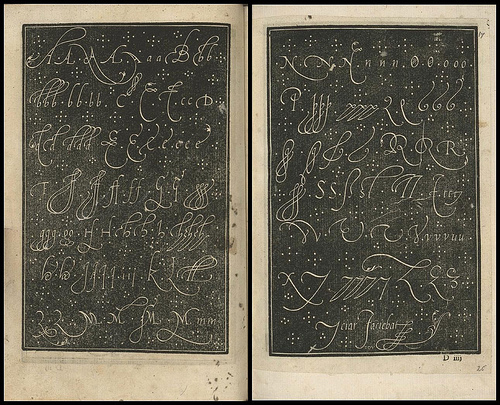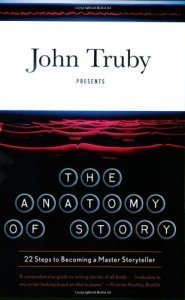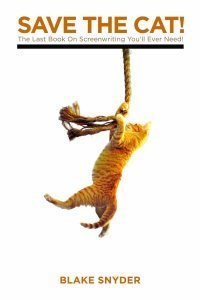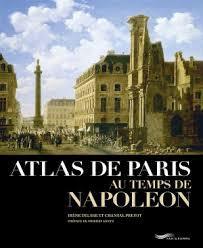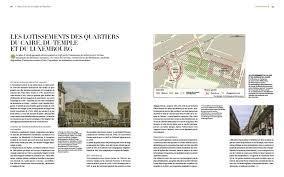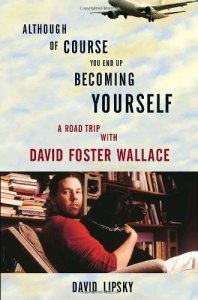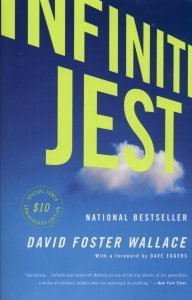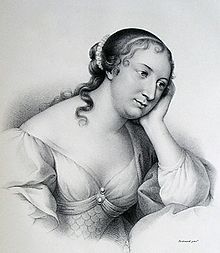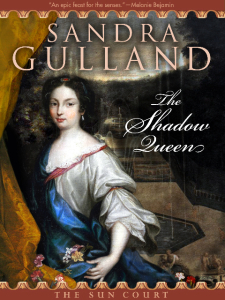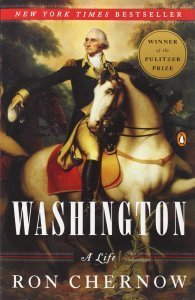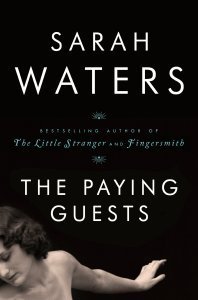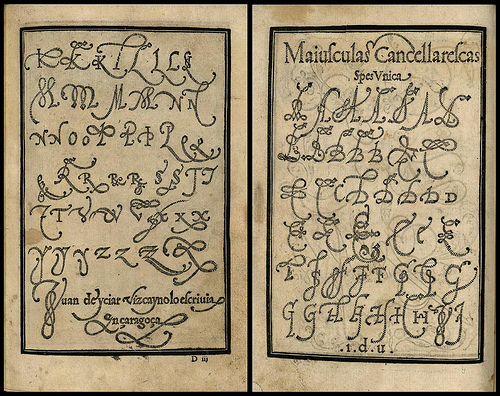Sandra Gulland's Blog, page 14
November 30, 2014
Bringing “Sunny Now & Then” to light—the mystery of the writing process
I just made a risky move!
To the subscribers of my newsletter, I’ve offered the first chapter of Sunny Now & Then—an unpublished novel I wrote in 1989.
Sunny is an eccentric 80-year-old who is somewhat inconveniently possessed by a spirit. It’s a light contemporary comedy/mystery. If you’re curious, and not a subscriber, sign up here. (If you are protective of your in-box—and who isn’t?—you can always unsubscribe.)
If you are already a newsletter subscriber, I’ll be offering this excerpt of Sunny Now & Then in my next newsletter.
What’s amusing about this early work, I think, is that although Sunny Now & Then is a contemporary comedy, it led directly to the writing and publication of The Many Lives & Secret Sorrows of Josephine B. five years later. (I think you can guess who the possessing spirit might be.)
Writing is such a circuitous and mysterious process!
November 29, 2014
Hello world! On the drowsy, wandering, somewhat lost feeling one gets after sending off a draft
Day before yesterday, I sent the 4th draft of The Game of Hope (working title) to my editor at Penguin—3 days before the due date. Yay!
I woke the next morning with 1) a slight hangover  (Ha! The result of opting for the wine paring at a fantastic 4-course Thanksgiving dinner), 2) the novel feeling that I could poke around at most any number of things: my blogs, my newsletter, on-line shopping for the holidays coming up. My bookkeeping. (Scratch that idea.) Tidy my desk. Add the last scribbled-up pages to the draft stack (see above).
(Ha! The result of opting for the wine paring at a fantastic 4-course Thanksgiving dinner), 2) the novel feeling that I could poke around at most any number of things: my blogs, my newsletter, on-line shopping for the holidays coming up. My bookkeeping. (Scratch that idea.) Tidy my desk. Add the last scribbled-up pages to the draft stack (see above).
Curiously, I’m still rewriting in my mind … and thinking about the next novel, the second Young Adult about Hortense.
Newsletter
I plan to send out a newsletter soon. If you’re not on the mailing list, sign up here.
For this next newsletter, one of the subscribers (randomly selected) will win a personally inscribed, autographed hardcover edition of The Shadow Queen.
Reading: I’ve been reading many, many research books, but curiously—no doubt because I’ve been so immersed getting The Game of Hope ready to send out—I’ve had a hard time reading fiction just now. The last novel I got completely absorbed in was The Paying Guests by Sarah Waters—and yes, completely absorbed!
Watching: After watching Pride & Prejudice (2005, with Keira Knightly) three times, I branched out to The Young Victoria, and now I’m re-watching the 3rd season of Downton Abbey.
Listening: to Serial (the podcast). I’m almost finished listening to Washington, a Life, by Rob Chernow. This is an epic work.
Recent blog posts over on my research blog:
An old hat, a necklace, and a letter likely rescued from the trash sell for close to 6 million
Lost and found in France’s on-line library archives
Quarantine: How the spread of deadly diseases were dealt with in late 18th century France
I will have more and more there on the ever-absorbing Bonapartes.
November 8, 2014
New covers for The Shadow Queen and a suitcase of research books
Tra la!
Here’s The Shadow Queen cover for the U.S. Anchor paperback edition, coming out in January:
It’s almost identical to the hardcover cover, which pleases me very much, since it is so very striking, my favourite cover ever.
I am curious to see what HarperCollins Canada comes up with; their intention is to create something quite different.
As for different, here is The Shadow Queen cover for my Sandra Gulland INK edition, by the ever-so-talented Kris Waldherr.
It should be ready to launch soon. I’m toying with the idea of publishing print editions as well as digital. We shall see.
With this last suitcase of research books now unpacked, I’m very nearly settled into my office in San Miguel de Allende. Time to get to work! I’ve a Dec. 1 deadline for The Game of Hope, and that will be upon me sooner than I realize.
Have a wonderful weekend! I hope you’re reading something delightful. I’m reading a rather horrid little book on the virtues of being tidy. More on this later. The author does make some good suggestions.
November 3, 2014
Last day in the bunker, first day of my 70th decade
Today is our day to pack up, for tomorrow we leave first thing, heading to Toronto. On Thursday late afternoon, we’ll be driving into beautiful San Miguel de Allende, Mexico.
I’m always delighted to arrive in San Miguel, but I’m also always sad to head south—sad to leave my library of research books, my lovely office (“the bunker”) overlooking fields and forest. It’s a difficult process. In the next 6 months I’m going to be finishing The Game of Hope as well as beginning the next Young Adult about Hortense (tentatively titled The Princess Problem). What will I need? It’s so hard to know.
Today I will finish going through all the piles of papers and books I’ve stacked up, decide what must come, what can stay, and what should be scanned into Evernote. The life of a Historical Novelist Snow Bird is made much easier with computers and the Net (there is so much more on-line now), but there is still a surprising amount I must take with me.
And … !
Today is my 70th birthday! My party was two days ago; it was wonderful and I feel splendidly fêted. It had a 60s theme (because I was in my final days of being a 60-something), the costumes were fantastic and the playlist I put together—with the help of this site—kept us rocking ‘n rolling all night. Old folks grooving!
Most special, our son Chet made a surprise visit from New York!
Frankly, I was a bit depressed for a time about the approach of this shocking milestone (What?! Me, elderly?!), but now I feel that there is something quite energizing about turning 70. One realizes that it’s time to begin to focus on what’s important. I feel it will be my most creative decade.
Bring it on!
October 18, 2014
Embarking on draft 4
Revision is daunting, and each revision is daunting in it’s own way. It always feels like a strange and unwieldy process. How to begin? Where to begin?
I began by making a list:
easy changes
harder changes
hard changes
When starting out, it’s best to begin with easy changes, and work up to the more challenging ones.
I was stopped in my tracks at the first heading. What was the name of Hortense’s school? What was it called at the time?
This simple question plummeted me into Google-land research, which, in the way of the Net, opened up wondrous worlds.
Then, of course, I was compelled to post to my research blog, Baroque Explorations:
Handwriting samples: Napoleon’s, Josephine’s, and that of Christophe Duroc.
On-line research: subscription publication—an 18th century method of fund-raising?
Yes, a form of procrastination, I know.
It just now occurred to me that my deadline is five weeks off, and that I am travelling for most of it.
Full stop.
I believe it time for me to make a list of essential changes, never mind easy, harder and hard.
As Napoleon would say: Basta! Get to work!
October 13, 2014
A writer’s routine: perseverance furthers
A reader asks:
“I’ve written my second novel and I just can’t seem to get it to the next step. I’m stuck in the querying process and it is quite the daunting process indeed.”
Daunting: yes.
Perseverance is key
Perseverance is the key to succeeding as a writer:
perseverance in continually learning about the craft,
perseverance in not being discouraged by rejection (and even learning from it),
perseverance in never giving up.
All of your questions (and more) will be answered in this excellent YouTube video interview by John Truby.
John Truby is a screenwriter, director and teacher of screenwriting. He has a very great deal to offer on the craft of story, so centrally important to novels as well as film.
In terms of plot craft, Truby’s book, Anatomy of Story, is excellent, but an even better book—at least to begin with, I think—is Save the Cat, by Blake Snyder. It is short and to-the-point.
Study the craft, revise, persevere.
(While you are waiting for responses to your second novel, you are working on your third novel: right?)
For more in this Writer’s Routine series:
A writer’s routine: how many … hours, days, words?
A writer’s routine: pantster or plotter?
A writer’s routine: how to get into a creative head space
A writer’s routine: evolving what works
A writer’s routine: where to write
A writer’s routine: on resisting an outline
A writer’s routine: how to be productive
A writer’s routine: on hunting & gathering
Image at the top from “A Most Delicate Art” at BibliOdyssey.
October 11, 2014
Run-around ping-pong & other Canadian Thanksgiving sports
Happy Thanksgiving, Canadians!
We host a rather large table of 20+ family and friends every year—a jolly pot-luck feast followed by fun and games (pool, run-around ping-pong,* a walk down our long driveway in the dark). My favourite holiday.
The Game of Hope
I’m finishing the read/edit of the 3rd draft of The Game of Hope (working title). The first 50 pages have some seriously sluggish spots, but by page 200, the novel seems to gather steam. Much to be done, of course—too many dropped threads—but not impossible. I may feel differently by the time I finish … and when I get feedback from my first editor (Allison McCabe) on Monday.
The book report
I’m making my way slowly through a magnificent book I was very lucky to be able to acquire (thank you, Peter Hicks!) at the Fondation Napoléonn in Paris: Atlas de Paris au Temps de Napoléon, by Irène Delage and Chantal Prévot.
It is full of wonderfully detailed information about Paris in those years, with amazing charts and illustrations.
I don’t think I mentioned a book I read this summer, an on-the-road interview with David Foster Wallace by David Lipsky, Although of Course you End Up Becoming Yourself. There are many moving things about this account, notably the sadness knowing that DFW killed himself in 2008.
The foreword by David Lipsky described the long period of absolute hell David Foster Wallace went though as doctors tried (and failed) to find a medication that would help his depression. We have all, no doubt, known someone who likewise lost a battle with depression; I consider it as serious and potentially fatal condition as cancer, and far less understood. The foreword by Lipsky helped me to understand how extremely hard this struggle is, even with loving support and help.
Of the interview itself, I found much of it interesting — insider gossip about publishing, etc. — and also enlightening. I liked how he felt beholden to his publishers to do as much as he could to help sell the book — Infinite Jest, in this case. I myself feel that way, and I know of big-time authors who don’t need to promote, who do so just for this reason.
I was amused that at one point, working with his editor, he was worried about how long the manuscript had become, and sent it in 9-point font, single-spaced. I did the reverse. Worried that I had cut too much from The Many Lives & Secret Sorrows of Josephine B., I sent it to my editor printed out in a bigger-sized font.
It was interesting having a glimpse into the lives of these two men born in the early 60s. I had no idea that people of a certain generation could be so addicted to TV. Not being a TV-watcher myself (except for the occasional drama-series binge), this was a revelation.
* Run-around ping pong: a game for at least ten people, preferably in a somewhat inebriated state, each with a paddle. The object is to keep the ball in play for as long as possible, the players circling, taking a turn at the ball. If we can get to ten: big cheer!
October 7, 2014
Travel-lag, research-lag, To-Do-List-lag
Update!
We’re back from a trip to London and Paris—I’ve a lot to absorb! No wonder I feel so “lagged” (not just jet-lagged).
Today I began the read/edit of the 4th draft of The Game of Hope. I always think I can whip through a manuscript in a matter of days—this one is only 70,500 words, after all—but I began this morning at 6:00, and I’m only on page 41.  (Sorry, I couldn’t resist an emoticon.)
(Sorry, I couldn’t resist an emoticon.)
Not that there isn’t a lot going on.
I’ve been posting a blog series on writing, a lovely thing to do when not writing. My latest post: A writer’s routine: on hunting & gathering. I hope to pull them all together for a modest Sandra Gulland INK e-book publication.
Speaking of INK publications, we have a beautiful cover by Kris Waldherr for the INK edition of The Shadow Queen.
I’m turning 70 —  (heh) — in one month, and I admit that it’s throwing me for a bit of a loop. Normally I’m fine with birthdays; I celebrate them! But 70?! How did that happen? I’ve been too busy to notice.
(heh) — in one month, and I admit that it’s throwing me for a bit of a loop. Normally I’m fine with birthdays; I celebrate them! But 70?! How did that happen? I’ve been too busy to notice.
To be thrown for a loop: such a curious phrase. According to one Net site, the loop “alludes to the comic-strip image of a person pushed hard enough to roll over in the shape of a loop.” Another says that “loop” refers to the force of a train, plane, or roller coaster when it travels in a loop, causing your head to spin. And yet another, of a calf brought down by a lariat looped around a leg. All very colourful. I’ll go for the comic-strip image.
Re. the craft of writing, this is a wonderful interview with John Truby, author of Anatomy of Story. Everything he says about scriptwriting applies to novels.
What I’m reading:
I’ve been listening to the biography Washington: a Life by Ron Chernow. (It’s excellent.)
The Paying Guests by Sara Waters, also excellent.
I’m also reading, for research, a number of books, but I’ll just mention here a book on Fanny Burney which includes snippets that were deleted from her diaries, many having to do with the mundane details of daily life. Of course I love it.
The image at top is of the novelist Madame de La Fayette, also weary.
October 6, 2014
A writer’s routine: on hunting & gathering
A friend asks:
When you are reading recreationally do you take notes if something triggers an idea for your latest work?
There is a part of the creation process I call “hunting and gathering.” This is most often when you’re fully immersed, looking for solutions, and ideas seem to come from everywhere. I’ve learned to always have note paper and a pencil on hand.
Or, do you try to turn your “work brain” off when reading recreationally?
By the same token, I need to wind down in the evening, so while I might jot down a note, I do not read for research, and draw the line at having a high-lighter in hand. (Yes, I mark up books.)
If you are driving in the car, out on a walk, or anywhere other than your desk and an idea comes to you (which would be great for your work), what is your process for remembering it? Dictaphone, notepad?
For note-taking while walking, nothing beats a scrap of paper and pen in a back pocket, but taking notes while exercising — on a treadmill, for example — can be tricky. Also, I’ve not yet found a good way to take notes while driving. I do keep a post-it pad stuck to the dash and a pencil handy, but it’s a bit dangerous if I can’t pull over.
Some writers use a dictaphone, and I’ve gone to some trouble to learn to use one, but I’m not very good at keeping it charged or playing back the notes. (I’m working on this.)
There are, of course, apps for just about all of this: apps for dictation, for note-taking.
Some writers find inspiration in a shower: what then? If you’re a shower-inspiration writer, consider wet note-pad paper.
When inspiration hits in the middle of the night and you don’t want to wake your partner, use Nite Note or similar product — a pad or pen that lights up.
By equipping your world with note-taking tools you’re sending a message to your brain that you’re listening. Be ready.
Other posts in this series:
A writer’s routine: how many … hours, days, words?
A writer’s routine: pantster or plotter?
A writer’s routine: how to get into a creative head space
A writer’s routine: evolving what works
A writer’s routine: where to write
A writer’s routine: on resisting an outline
A writer’s routine: how to be productive
Opening image from “A Most Delicate Art” at BibliOdyssey.}
October 1, 2014
Paris: research adventures, food & wine, French class & Smart Board infatuation
My husband and I have been over two weeks in Paris, and today is our last day here. :-(
I’ll be spending much of it in the library of La Fondation Napoleon, but I’m tempted to slip in an hour as a flâneur this morning, strolling the book stalls by the Seine … and perhaps even take some photos.
I’ve not taken many, in part because it has been very much a working trip.
For the first two weeks I was in class at l’Alliance Française Paris.
At level B1, I was in way over my head, but the teacher was fantastic, very charming, and so I persevered—and I’m happy I did so. I’m less shy now about speaking French, and in another ten years … who knows? By the time I’m 80, I might be able to understand what people are actually saying.
In any case, I was absolutely enchanted—besotted!—with the teacher’s Smart Board. This technology is years old, but it blew me away. I had no idea! On a Smart Board a teacher can move images around, write, move words, scroll, call up videos, play audio, switch between pages, connect to the Net: anything.
Immediately I thought: every home needs a Smart Board. More to the point: I need a Smart Board. Imagine outlining a novel on it, calling up character images … ! Seeing a Smart Board, I felt the same kind of revery I experienced first seeing a computer. What a tool!
When I wasn’t in class or frantically preparing homework (or eating fine food and drinking fine wine), I plunged into research. Our first weekend in Paris it was the Journées du Patrimonie, when many historic places are opened to the public. I wanted to see inside the Petite Luxembourg Palace, where Josephine, Napoleon and “the kids” — Hortense and Eugène — lived before the move to the Tuileries.
The lines and crowds were overwhelming, and the public was only allowed into a few rooms of the Petite Luxembourg, but I did see the room believed to be the one Napoleon worked in.
Of course, it would have been a bit thread-bare then.
The Luxembourg palace itself is, of course, amazing. Here, the library:
It would have been quite a bit different just after the Revolution, of course. It had been used as a prison, and had no doubt been vandalized.
Also around Paris, I searched out sites:
—the location of La Chantereine (discovering how very long the laneway must have been);
—where the mother of a character killed herself during the Revolution;
—where Talleyrand lived (and gave a ball);
—where Napoleon’s brother Lucien Bonaparte lived (and likewise gave a ball).
And, of course, the Louvre, where I lingered by portraits of my characters.
I loved seeing the glittering detail of Josephine’s gown up close:
Venturing out of town, we went to Château de Grignon, the home of Hortense’s best friends (and now a school)…
… and to Joseph Bonaparte’s country château Mortefontaine, where I was very very lucky to connect with the owner and be given a private tour.
Last, we went to Saint-Germain-en-Laye where I was again very lucky that a former residence was kind enough to show us into the place where Madame Campan’s school used to be. Much of it is new, but there are some remnants of the former Hôtel de Rohan:
In the back garden, there was this intriguing bit of antiquity:
A bit of the former chapel, perhaps?
Of course, as is always the case with travel research, I discover that I have quite a few changes to make in the next draft, which I will begin next week. But until then, time to flâneur.

